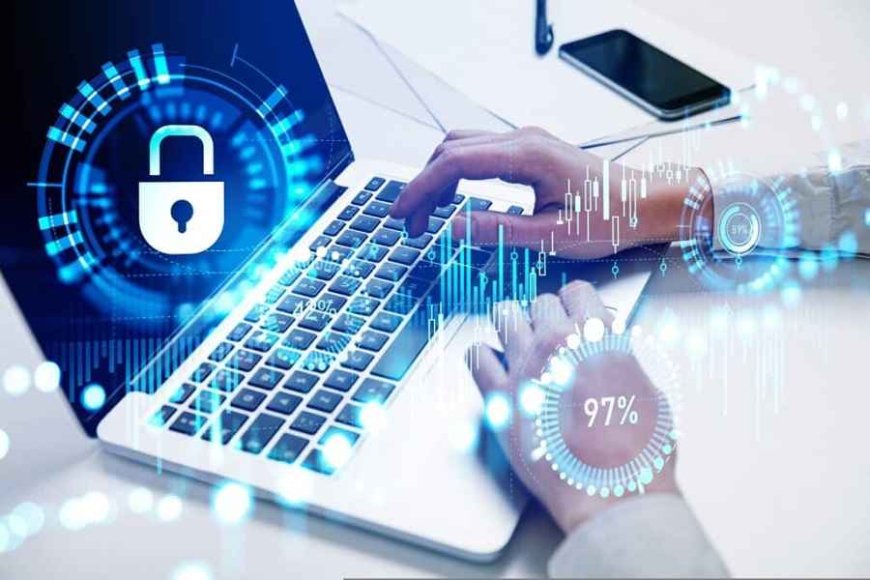Cybersecurity in a Connected World
In our increasingly interconnected world, the importance of cybersecurity has reached unprecedented levels.

In our increasingly interconnected world, the importance of cybersecurity has reached unprecedented levels. As we rely more on digital technology, the threats to our data, privacy, and critical infrastructure have multiplied. In this article, we will explore the growing significance of cybersecurity, examine emerging threats, and discuss innovative solutions that are crucial for safeguarding our connected lives.
The Expanding Digital Landscape
The 21st century has witnessed a digital revolution, with the proliferation of smart devices, cloud computing, and the Internet of Things (IoT). While these advancements have transformed how we live, work, and communicate, they have also expanded the attack surface for cybercriminals. Here are some key factors contributing to the need for enhanced cybersecurity:
IoT Vulnerabilities: The IoT has connected everyday devices to the internet, from smart thermostats to medical devices. While convenient, these devices can be vulnerable to hacking, potentially compromising user privacy and even physical safety.
Remote Work: The adoption of remote work surged significantly due to the COVID-19 pandemic's impact, hastening the transformation of traditional work structures. While this offered flexibility, it also created new entry points for cyberattacks as employees accessed sensitive company data from their home networks.
Digital Transformation: Organizations worldwide are embracing digital transformation, migrating their operations to the cloud. While this enhances efficiency, it introduces new cybersecurity challenges, as cloud environments can be targets for cybercriminals.
Emerging Cyber Threats
As technology evolves, cyber threats evolve with it. As the digital landscape evolves, cyber attackers are growing increasingly sophisticated, utilizing advanced methods to exploit vulnerabilities. Here's a glimpse into the evolving cyber threat landscape:
Ransomware Attacks: Ransomware attacks have surged in recent years, with cybercriminals encrypting data and demanding a ransom for its release. These attacks can cripple businesses and institutions, causing financial losses and eroding public trust.
AI-Powered Attacks: Cyber attackers are leveraging artificial intelligence (AI) and machine learning to automate their attacks. This enables them to adapt quickly to defenses and identify vulnerabilities faster than ever before.
Supply Chain Attacks: Hackers are targeting the supply chains of organizations, infecting software updates or hardware components with malware. This can compromise the security of numerous entities downstream.
State-Sponsored Cyber Espionage: Nation-states are increasingly engaging in cyber espionage, targeting government agencies and private sector organizations. These attacks can have far-reaching political and economic consequences.
Phishing and Social Engineering: Cybercriminals are refining their phishing and social engineering tactics, making it challenging for individuals and organizations to detect and defend against deceptive emails and manipulative tactics.
Innovative Cybersecurity Solutions
To combat these evolving threats, cybersecurity professionals and researchers are developing innovative solutions:
Zero Trust Architecture: Zero Trust is a cybersecurity framework that assumes no trust within or outside the network. It requires strict identity verification for anyone trying to access resources, regardless of their location.
AI-Enhanced Security: AI and machine learning are being used to detect anomalies and potential threats in real-time. These technologies can identify patterns indicative of cyberattacks and respond swiftly.
Blockchain Technology: Blockchain's decentralized and immutable nature can enhance data security. It is being explored for applications beyond cryptocurrencies, such as secure data sharing and identity verification.
Multi-Factor Authentication (MFA): Adding an extra layer of security, MFA demands multiple forms of identification from users, significantly heightening the challenge for unauthorized individuals attempting to gain access.
Cybersecurity Awareness Training: Education is a critical aspect of cybersecurity. Training programs are helping individuals and employees recognize and respond to threats effectively.
Collaborative Threat Intelligence Sharing: Organizations are increasingly sharing threat intelligence with one another. This collaborative approach helps identify and mitigate threats more efficiently.
Quantum-Safe Encryption: With the advent of quantum computing, traditional encryption methods could become obsolete. Quantum-safe encryption algorithms are being developed to secure data in the artical-quantum era.
The Human Element
While technology and solutions play a crucial role in cybersecurity, the human element remains equally important. Individuals and organizations must prioritize cybersecurity hygiene:
Password Management: Strong, unique passwords and regular password changes are fundamental in preventing unauthorized access.
Software Updates: It's crucial to keep software, operating systems, and applications up to date to ensure their optimal performance and security. Many cyberattacks exploit known vulnerabilities that have patches available.
Phishing Awareness: Individuals should be cautious of unsolicited emails, messages, or calls. Verifying the authenticity of requests for sensitive information is essential.
Data Backups: Regularly backing up data ensures that it can be restored in case of a ransomware attack or data breach.
Incident Response Plans: Organizations should have well-defined incident response plans in place to minimize the impact of cyberattacks.
Cybersecurity has become an indispensable component of our interconnected world. As we continue to embrace digital transformation and technological innovations, the need for robust cybersecurity measures becomes even more critical. The evolving cyber threats demand a proactive approach, with organizations, individuals, and governments working together to stay one step ahead of cybercriminals. Through innovative solutions, increased awareness, and a commitment to best practices, we can navigate the complexities of our connected world while safeguarding our digital future.
